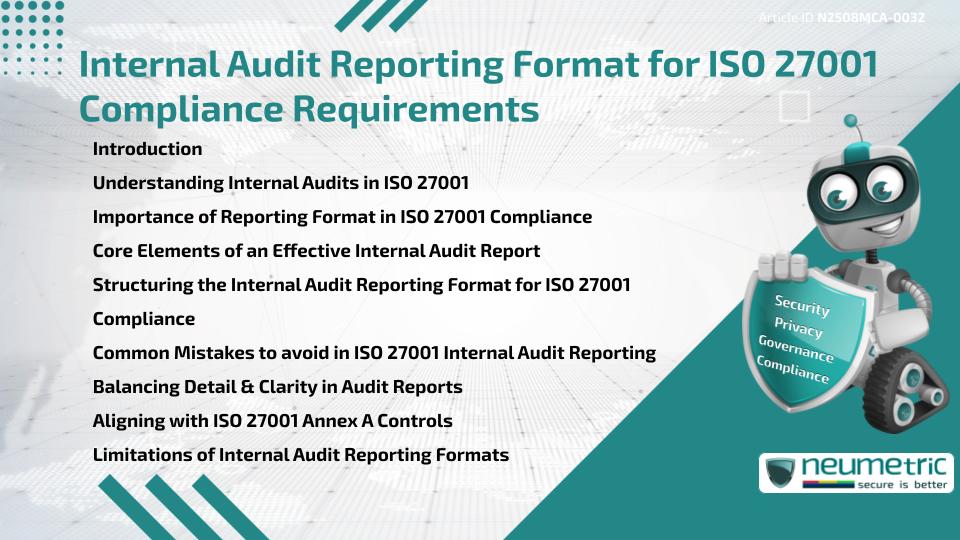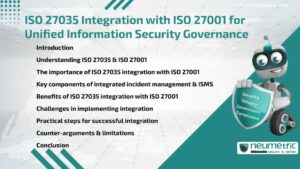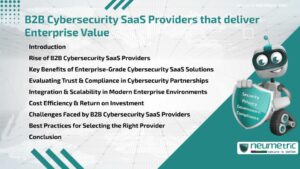Table of Contents
ToggleIntroduction
An effective Internal Audit reporting format for ISO 27001 compliance is vital for demonstrating an Organisation’s adherence to Information Security Best Practices. This format structures how findings are reported during audits & determines the clarity, usefulness & accountability of the report. It ensures that all Risks, control weaknesses & compliance gaps are documented & actionable. A well-structured report supports Continuous Improvement & aligns with the expectations of Auditors & Stakeholders.
This article explains how Internal Audit reporting works in the context of ISO 27001, highlights the key components of a good reporting format, explores common pitfalls & discusses how to align reports with the ISO 27001 Annex A controls. By the end, you will have a practical guide to creating an Audit report format that ensures clarity, accuracy & ISO 27001 readiness.
Understanding Internal Audits in ISO 27001
Internal audits are a mandatory requirement of the ISO 27001 standard, specifically covered under Clause 9.2. Their purpose is to verify whether the Information Security Management System [ISMS] conforms to the Standard & the organisation’s own Policies.
Unlike external audits, internal audits are performed by internal teams or Third Party contractors without Certification authority. They must be objective, evidence-based & well-documented. The Internal Audit helps identify areas of non-conformity, assess the effectiveness of controls & support management reviews.
You can explore ISO’s official overview of ISO 27001:2022 for more context on Audit expectations.
Importance of Reporting Format in ISO 27001 Compliance
The Internal Audit reporting format for ISO 27001 compliance acts as a blueprint for clear & consistent documentation. An inconsistent or vague report can cause misinterpretations & delays in remediation. A structured format ensures all relevant details are recorded, such as:
- Scope & objectives of the Audit
- Methodology used
- Key findings & observations
- Non-Conformities or areas for improvement
- Corrective Actions & responsible parties
Proper reporting also enables Organisations to demonstrate compliance during external Certification audits.
Core Elements of an Effective Internal Audit Report
A well-documented Internal Audit report for ISO 27001 should contain the following elements:
- Audit Title & Date: Clearly identify the report.
- Scope: Define the boundaries & objectives of the Audit.
- Criteria: Reference ISO 27001 clauses or internal documents.
- Audit Team: List the Auditors involved.
- Methodology: Describe how evidence was gathered & evaluated.
- Findings: Separate conformities from Non-Conformities.
- Risk Impact: Explain the consequences of each finding.
- Recommendations: Offer practical remediation steps.
- Follow-Up Actions: Assign ownership & deadlines.
Using a predefined template ensures consistency & saves time. Templates should be flexible enough to suit different departments & scopes.
Structuring the Internal Audit Reporting Format for ISO 27001 Compliance
The Internal Audit reporting format for ISO 27001 compliance should follow a logical & easy-to-follow layout. Here is a recommended structure:
- Cover Page: Include Audit title, date & document version.
- Table of Contents: Optional for longer reports.
- Executive Summary: A snapshot of overall findings & critical issues.
- Audit Objective & Scope: Clarify what was audited & why.
- Audit Criteria: Mention applicable ISO 27001 clauses or internal documents.
- Audit Findings: Categorized as follows:
- Conformities
- Opportunities for Improvement
- Minor/Major Non-Conformities
- Risk Assessment Summary: Outline potential impacts.
- Recommendations & Actions: Clearly assign tasks with due dates.
- Appendices: Include checklists, evidence logs or references.
This format enhances readability, supports traceability & facilitates issue tracking. It also simplifies the management review process required under Clause 9.3.
Common Mistakes to avoid in ISO 27001 Internal Audit Reporting
Creating an Audit report is more than just listing issues. Many teams fall into avoidable traps:
- Lack of objectivity: Bias or assumptions reduce report credibility.
- Overuse of jargon: Reports should be understandable by both technical & non-technical audiences.
- Incomplete documentation: Missing dates, responsibilities or evidence links reduce report value.
- Ignoring positive findings: Reports should include what’s working well too.
- No prioritisation: Failing to highlight critical issues may delay remediation.
Avoiding these mistakes makes your Internal Audit reporting format for ISO 27001 compliance more robust & reliable.
Balancing Detail & Clarity in Audit Reports
Too much detail can clutter a report while too little can cause confusion. The right format includes:
- Bullet points for findings
- Tables for summarising multiple issues
- Clear & short paragraphs
- Visual aids like heatmaps or matrices, if applicable
Aligning with ISO 27001 Annex A Controls
One of the most important aspects of reporting is ensuring alignment with Annex A controls of ISO 27001. These include:
- Access Control
- Cryptography
- Physical & environmental security
- Supplier relationships
- Compliance obligations
When findings are mapped directly to these controls, they gain greater relevance. This mapping also helps demonstrate how your ISMS addresses specific Risk areas.
Limitations of Internal Audit Reporting Formats
While templates & formats streamline documentation, they also have limitations:
- May not suit all departments equally
- Can encourage a checklist mentality
- Might overlook emerging Risks
- Rigid formats can stifle auditor insights
The key is to use the format as a guide rather than a restriction. Tailor your format when needed, especially for audits of new systems or complex environments.
Takeaways
- The Internal Audit reporting format for ISO 27001 compliance is crucial for demonstrating adherence to the standard.
- A structured format improves readability, traceability & actionability.
- Including clear findings, aligned controls & recommendations enhances Audit value.
- Avoid common pitfalls like vagueness or lack of prioritisation.
- Use the format as a guide while allowing room for contextual adjustments.
FAQ
What is the requirement of the Internal Audit in ISO 27001 Certification?
The requirement is to verify that the ISMS is effectively functioning & it conforms to ISO 27001 Standard & Internal Policies defined.
How often should internal audits be performed?
At least once a year or more frequently based on Risk, changes or past Non-Conformities.
Who can conduct an Internal Audit for ISO 27001?
Internal staff trained in auditing or external consultants who are independent of the area being audited.
What format should an ISO 27001 Audit report follow?
It should include objectives, scope, methodology, findings, Non-Conformities & recommendations.
How do you write non-conformity in an Audit report?
Clearly state the clause violated, describe the issue & include objective evidence.
Are positive findings necessary in an Internal Audit report?
Yes, they demonstrate what is working well & support continual improvement.
Should Risk impact be included in Audit Findings?
Yes, to help prioritise remediation & communicate the severity of issues.
Can templates be used for Internal Audit reports?
Yes, but they should be adaptable to suit different contexts & Audit scopes.
References
Need help for Security, Privacy, Governance & VAPT?
Neumetric provides organisations the necessary help to achieve their Cybersecurity, Compliance, Governance, Privacy, Certifications & Pentesting needs.
Organisations & Businesses, specifically those which provide SaaS & AI Solutions in the Fintech, BFSI & other regulated sectors, usually need a Cybersecurity Partner for meeting & maintaining the ongoing Security & Privacy needs & requirements of their Enterprise Clients & Privacy conscious Customers.
SOC 2, ISO 27001, ISO 42001, NIST, HIPAA, HECVAT, EU GDPR are some of the Frameworks that are served by Fusion – a SaaS, multimodular, multitenant, centralised, automated, Cybersecurity & Compliance Management system.
Neumetric also provides Expert Services for technical security which covers VAPT for Web Applications, APIs, iOS & Android Mobile Apps, Security Testing for AWS & other Cloud Environments & Cloud Infrastructure & other similar scopes.
Reach out to us by Email or filling out the Contact Form…





